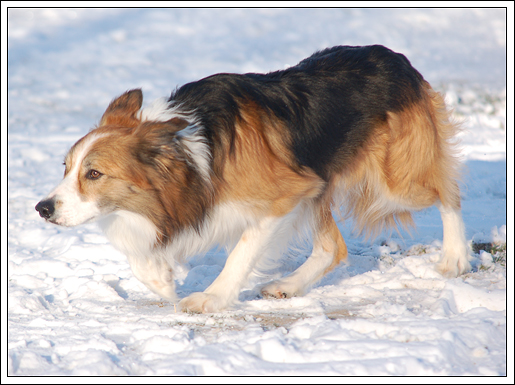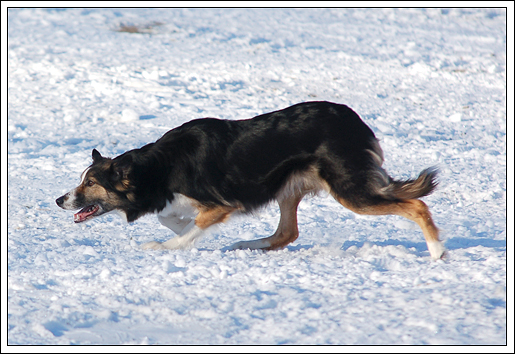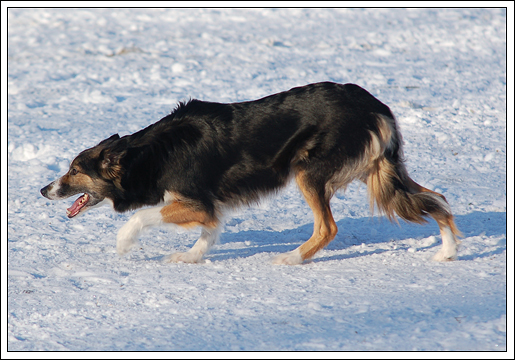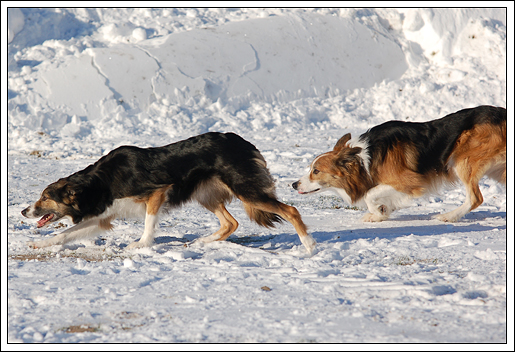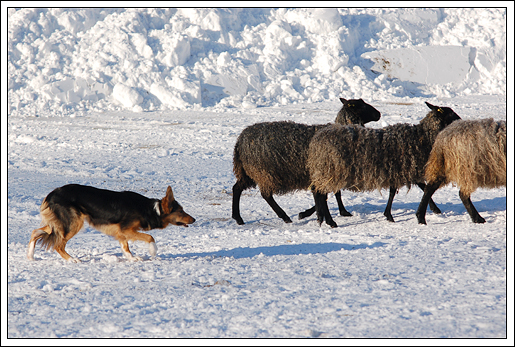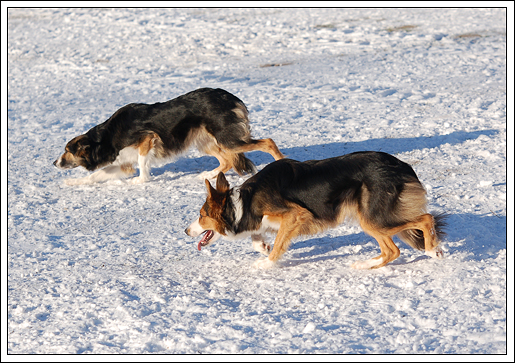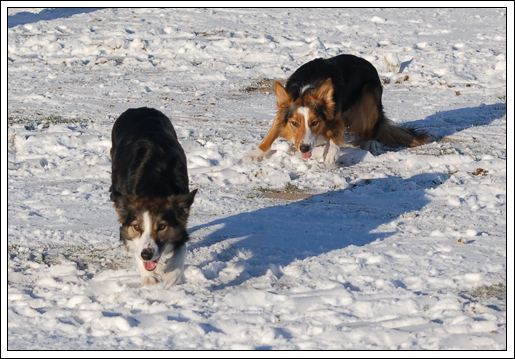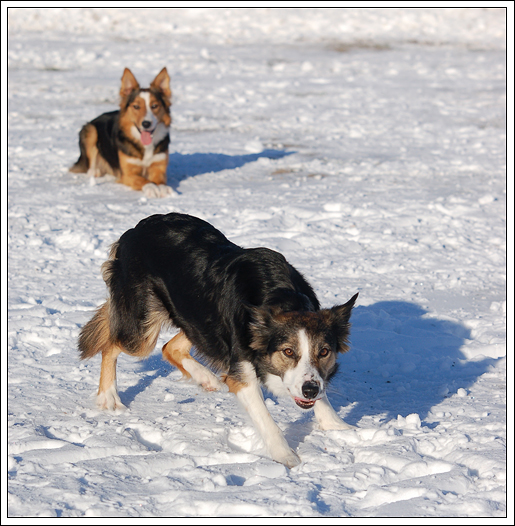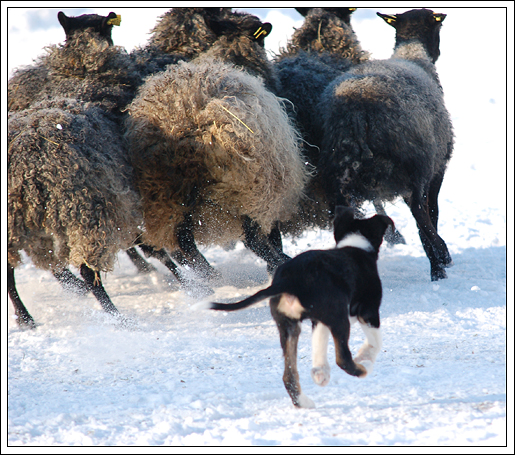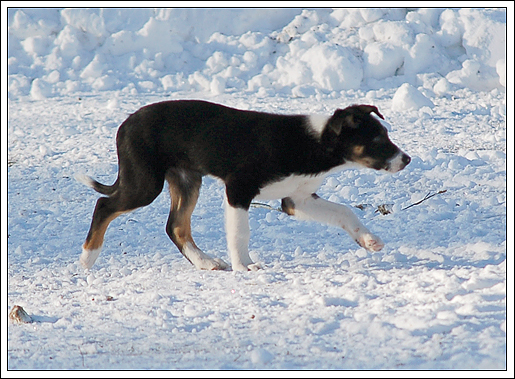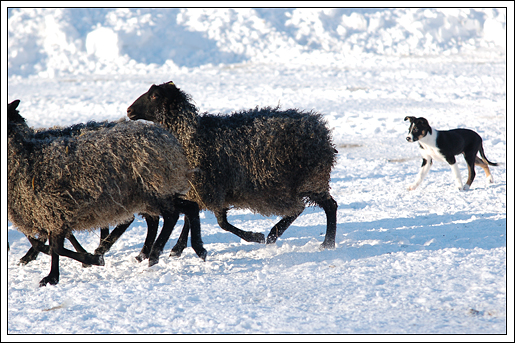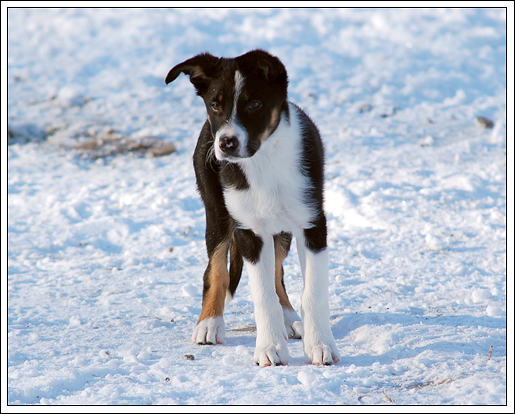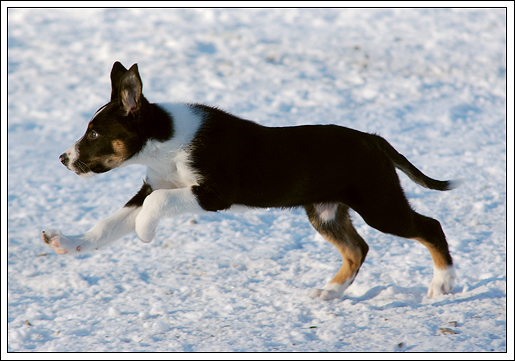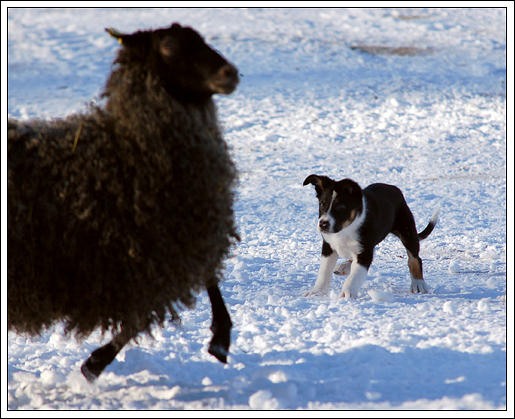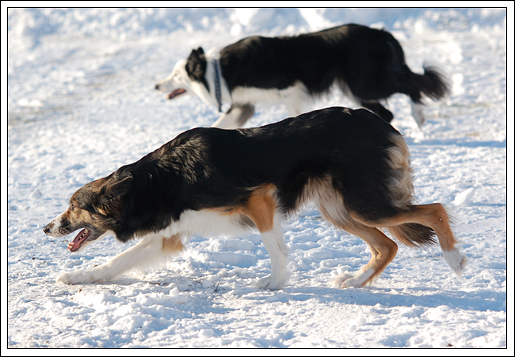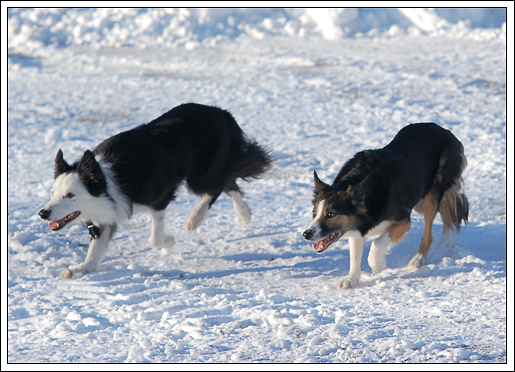Wow! I love that so many have contributed to the discussion on shaping. In total (Swedish and English blog) there are over 50 comments made. This seems to be a topic that needs discussion. I’m going to write some of my own thoughts on the subject, but of course, I don’t have all the answers (no one does). I don’t think that shaping only works for a certain type of dog. Our dogs are all very different, but they are all successfully shaped. Some of them have been easier to train, but that would probably be true regardless of method. I think it’s up to each trainer to decide how they want to train their dog, as long as the method is reward based. I see a lot of great benefits with shaping, compared to luring or targeting, and that’s why I use it a lot.
How ever you choose to train your dog, think twice before making statements like “shaping makes my dog stressed” or “my dog does not like to think for himself”. Of course, dogs are born with different personalities, but we can do a lot to nudge them in the right direction. I will always try to strengthen the weaker sides by building toy drive, socialization, handling etc. In this, I also include shaping how my dog acts in training. I believe that you can get all (with very few exceptions) dogs to be calm and focused in shaping. And that all dogs can learn to love shaping.
It is, of course, a matter of what you feel like spending time doing. Some dog trainers seem to always look for the path of least resistance – if the dog won’t play, they’ll give him treats instead, if the dog won’t retrieve, they won’t use toys, if the dog get’s passive in shaping, they help him out. A trainer like that might feel that she is simplifying things (in contrast to the poor people like me that will “make everything so complicated”), but she will without a doubt get shaped by her dog. That leads to the dog developing his strengths, but he’ll never get a chance to work on his weaker sides. When people ask me where I get the patience to do shaping, I quietly feel that it would require a lot more patience on my part if I had to help my dogs through all their life. Shaping might require some patience for a short period of time when you’re just starting out, but you will gain that time many times in the future. A dog that is shaping wise will learn advanced things so much faster than the dog that always needs guidance.
Champions in any field make a habit of doing things others find boring or uncomfortable
The biggest problem in the Swedish comments, were how people desribed the training. Here is one example: “I’ve heard about dogs shutting down a lot as soon as they are expected to offer behaviors”. The key word being expected. Stop expecting anything from the dog, and you’ll do well. All dogs “offer” behaviors all the time. They stand, sit, lie down, sniff, drink, eat, pee, scratch, turn their heads, walk, yawn, prick their ears, wag their tails… If one of these behaviors start producing a reward that the dog really wants, that behavior will increase in frequency. Voila! – The dog is offering behaviors.
Stop your efforts to influence the dog and start observing to find behaviors to reinforce.
If your dog gets worried while shaping, you shouldn’t be staring at the dog and expect him to offer behaviors. This is a great comment posted in the Swedish blog:
Jessica says:
“I thought that my worried young dog couldn’t be shaped. She never offered behaviors and she would get more and more anxious and finally go lie down somewhere. Not good. But then I tried to click for all movements, as long as she did something. And all of a sudden, she got it. You can really see how proud she gets and how her self confidence is growing. “Look at me! Isn’t this worth a click!”
If you have a dog that gets worried by shaping, try this tonight: Get a bowl of really tasty treats ready. Lock the other dogs away (if you have more than one). Turn on the tv and watch something that is interesting enough for you to have patience, but not so interesting that you forget all about the dog. Choose if you’d like to use a clicker or not (depending on your dog’s previous experiences with the clicker). Watch TV. Reward all movements from the dog by (clicking and) throwing a treat to the dog. Do reward ALL movements to begin with. If your dog starts repeting only one behavior, you can choose to not reward that any more, but wait for something else. It’s a good idea to make sure that the dog has to move to get the treat (if your dog lies down, throw the treat so that he has to get up to get it). If your dog goes to sleep – let him. He will eventually get thirsty, need to pee or get up just to change position. If you don’t get a lot of behaviors tonight, you can put the bowl of treats in the fridge and try again tomorrow.
There is no simple answer to this. But I am convinced that there are a lot of dogs that could enjoy shaping if they only got the chance. There’s so much to write on this subject and I’ll have to come back to it. Especially if you keep discussing it in the commend field!


